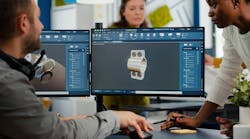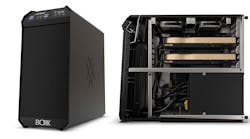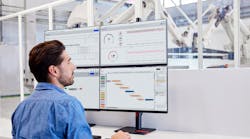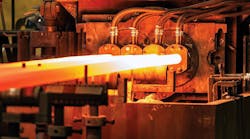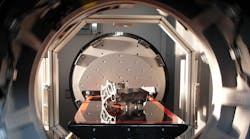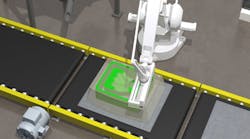I'm challenging you to think about your long-term technology strategy. First, let’s agree that a foundry is a business, and any business must be optimized to maximize profit and total revenue. So, you get a new project, materials come in, castings go out, and the numbers change. If you're making a living off that business then you're pretty interested in how those numbers change on a daily, monthly, and quarterly basis. How fast is the change? Positive or negative? What is your velocity?
Now we need some information: How much money is in the bank, and how fast is that wealth is growing or shrinking. That gives us enough awareness to know if we are going in the right direction. A business is competitive right? We need to know month-to-month, if things are speeding up or slowing down. Do we need to put on the brakes, or step on the gas? We want to know the acceleration. Are sales growing fast enough to hit the end-of-year target, or do we need to change the rate? And, are we getting left behind?
Now, let’s connect this to a technology strategy. We're using a foundry process: sand-mold-metal-repeat. If you want to add more significant zeroes to the balance sheet, we're going to have to change the process and optimize. We will need to learn something new to run the line faster, improve quality, and expand the offerings. In order to increase your velocity you are going to have to be able to accelerate. In order to do this, you are going to have to understand and implement new technology.
Of course, this includes knowing what new technology you need to adopt, and when to do it. It may mean that your technology strategy is to improve your hiring and training program, because better foundry engineers and operators might be what makes the difference. Teach people in your organization to stay connected with technology and how to apply it to improve the business: New technologies need more highly qualified personnel.
So what does that have to do with 3D Printing? It's tied to the ability that some technologies have to change the rate of acceleration. How do you go faster, faster? There are a few technology innovations that create inflection points in improvement. Metalcasting, combustion engines, computers, 3D printing, and cloud computing, all are technologies that change the rate at which new innovations can happen. 3D printers can make parts, but the existence of 3D printing is changing what kinds of parts can be made, and where and when we need to make them.
Take, for example, Netflix. When little video rental stores were fighting for space on every street corner, some of the bigger chains got to be very good at optimizing the old process of getting videos to you. They had figured out where to be, what movies to offer, how long the rental periods were, and what to charge for them. Netflix came in first with a new pricing regime: no storefront, and distribution through the mail and the Internet. They weren't optimizing the old performance curve; they were on a whole new curve.
By introducing and optimizing streaming of videos, and expanding into TV series production, they are rising further up the slope on the new curve. Those brick and mortar stores that were so good at the old model? Go try to find one. By putting the movies, the data, into the cloud, and changing the distribution model, Netflix was able to make more innovations in customer service, pricing, and content, and they were able to make those innovations faster than their competitors because of the new technology platform. Now, with "smart” TVs, a lot of people don't even use the DVD player anymore.
Matching Cost, Redirecting Capital
So, combine 3D printing with robotics and simulation software in a foundry, and you get a similar opportunity. 3D printing now can match production costs in the range of traditional methods for making low-volume castings, but the capital cost for tooling is invested in the 3D printer, not in dedicated tooling.
Design costs drop to the point that set-based engineering can be an affordable reality. This means that in-house engineers can carry parallel design concepts to further maturity with faster cycle time, for the same costs. Eliminating your need for tooling means that your customers can make design changes during the life of a product — improving profitability, limiting a recall, making improvements through the service spares.
Foundries that can work with their customers this way can capture a design early in the concept phase, and support manufacturing all the way to end of life, all while reducing the need for high inventory levels, or storing that inventory and tooling for the entire service life of the product.
Also, 3D printing and cloud data are making localized production a reality. Just as businesses that are listed online get more visibility than those that are only listed in the phone book, those who are integrating new technology now will be the ones who thrive in the future.
By being able to print the molds, cores, tooling, or parts where they are needed, when they are needed, you are eliminating more than tooling costs and inventory. Imagine telling your boss you can save the company $500,000 in freight and import duties, on one production part. How does that work? Let’s say you need to make 500 parts over a few years and that they get shipped internationally. If that's normally cast all at once, warehoused, and shipped on demand to five different continents as needed, then you are probably paying about $1,000 per piece in freight, on average.
Now, imagine that you can email a mold pack through your network of qualified vendors, and have it printed with the gating, vents, etc., already in the right place. The part gets poured and finished at the foundry closest to the point of us. No import duty as it was “made locally."
Vendors who are working with approved robotic machining, welding, and digital inspection tool will be sought after as they prove how they can vastly simplify logistics nightmares that have been accepted as the status quo.
Robotics, 3D printing, and cloud computing – they let you improve the rate that you can make those innovations that will accelerate the growth of your business.
Will Shambley is the president of Viridis3D LLC, developers of additive manufacturing technology for producing sand molds and cores. Contact him at LinkedIn. Learn more at www.viridis3d.com


